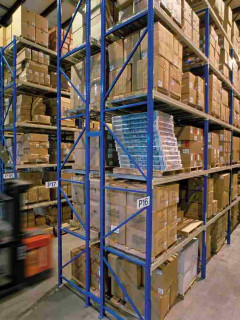A poorly packed parcel is a poorly protected parcel. 73% of customers who receive a damaged parcel are unlikely to recommend a website. Avoid creating a bad customer experience by avoiding these 10 mistakes when preparing your orders.
The 10 points to watch out for below can also serve as a checklist before each shipment and help you adopt the right gestures forprofessional packaging.
Mistake number 1: Packing with a used carton
A damaged or used box is noticeable: your customers may not appreciate their new purchase arriving in a second-hand package.
it is also important to respect the specificities of the product: the same type of cardboard is not used to pack food, electronics, liquids or solids for example.
Don’t forget to take into account things like temperature: a carton that has been used to pack beauty products will not be suitable for a fresh food product.
Mistake number 2: using a box that is too big
The wrong size carton will cause two problems:
- the risk of damaging the product by bumping into the walls ;
- the risk of damage to the product due to bumping into the walls; and the abuse of the cushioning, which leads back to mistake number 3.
The right gesture choosing the right size boxthis may cost you a little more, but it will save you from having to return the product due to damage, and therefore from having to make expensive return trips.
Mistake number 3: insisting heavily on cushioning
It is all a question of good measure: the product must obviously be well padded, with products adapted to its specificities, to avoid breakage or deterioration.
On the other hand, you should not crush the product under too much cushioning, because the consumer will ask: is it practical? Is it easy to recycle? A box stuffed with unnecessary paper will give a negative image of waste and clutter.
Aim for the right kind of padding, even custom-made.
Mistake number 4: forgetting to consider the means of transport
Ask yourself the question of the type of carrier chosen for delivery: is the parcel on a pallet, sent by the Post Office or a courier service? These questions are important, because the box will not be subjected to the same pressures and load breaks.
The transport must therefore determine your choice of packaging and cushioning, otherwise the parcel may arrive crushed at the customer’s premises.
mistake number 5: slipping the invoice into the box without protection
A crumpled invoice is not conducive to a good customer experience, so make sure you send it in an envelope: the brand image will be enhanced.
Mistake number 6: Systematically inserting resealable return envelopes
Of course, they make it easier to return orders and appeal to the consumer, but they are not always suitable for the product being returned: a glass carafe returned in a thin re-sealable pouch is likely to arrive in a thousand pieces at the e-tailer’s..
It is therefore not an obligation, even less so if your shipping carton is suitable for a return.

mistake number 7: Packing out of order
This may seem like a no-brainer, but the speed with which we deal with a large volume of orders sometimes leads to mistakes or oversights. So remember to :
- check the accuracy of the contents: product reference, correct number of items ;
- separate the items so that they do not damage each other;
- choose the right cushioning, especially when there are several products in your box.
Mistake number 8: overusing adhesive tape
It is important to choose the right tape for the box and to take into account the consumer’s experience when opening the box: too much tape will make it difficult to open the box, even if it means damaging it and ruining its re-use for a possible return.
Mistake number 9: saving on information labels
Fragile, dangerous, electronic or international products: the right labels will ensure that your parcels pass through the various delivery stages safely and arrive at their destination in perfect condition.
Mistake number 10: running out of stock
Good storage management saves time and is more efficient. It also avoids the use of inappropriate cardboard and the risk of damage. Imagine that your cushioning elements are out of stock. You would then have only two options:
- Send the parcel without cushioning and put your product at risk of being damaged;
- Use newspaper and disappoint your customer when he opens the package.
A shortage of suitable cardboard boxes and the need to pack the product(s) to be shipped in a larger box would lead to an excessive use of cushioning, which could result in a shortage of cushioning if the problem lasts for a long time before being supplied.
The right solution: have the right packaging in stock to optimise the shipment of products.
Professional delivery and packaging are now key elements of a successful customer experience. By following these tips, your parcels will arrive intact at your customers’ doorstep for a happy unboxing experience. A consumer who is satisfied with the quality of his or her parcel will be more likely to recommend the e-tailer.

The 3 key points to remember:
- The right box for the right product, which will minimise the risk of breakage or damage.
- Careful packaging and shipping: the right box and cushioning, the right labels, a protected invoice are important elements for an optimal consumer experience.
- Organisation and good stock management: it is better to pack in the right order, invest in and stock a wider range of boxes than to send the wrong product in the wrong packaging with the wrong cushioning.
The best thing to do is to draw up a checklist and display it in front of the order preparation area so that you don’t forget any steps!

















